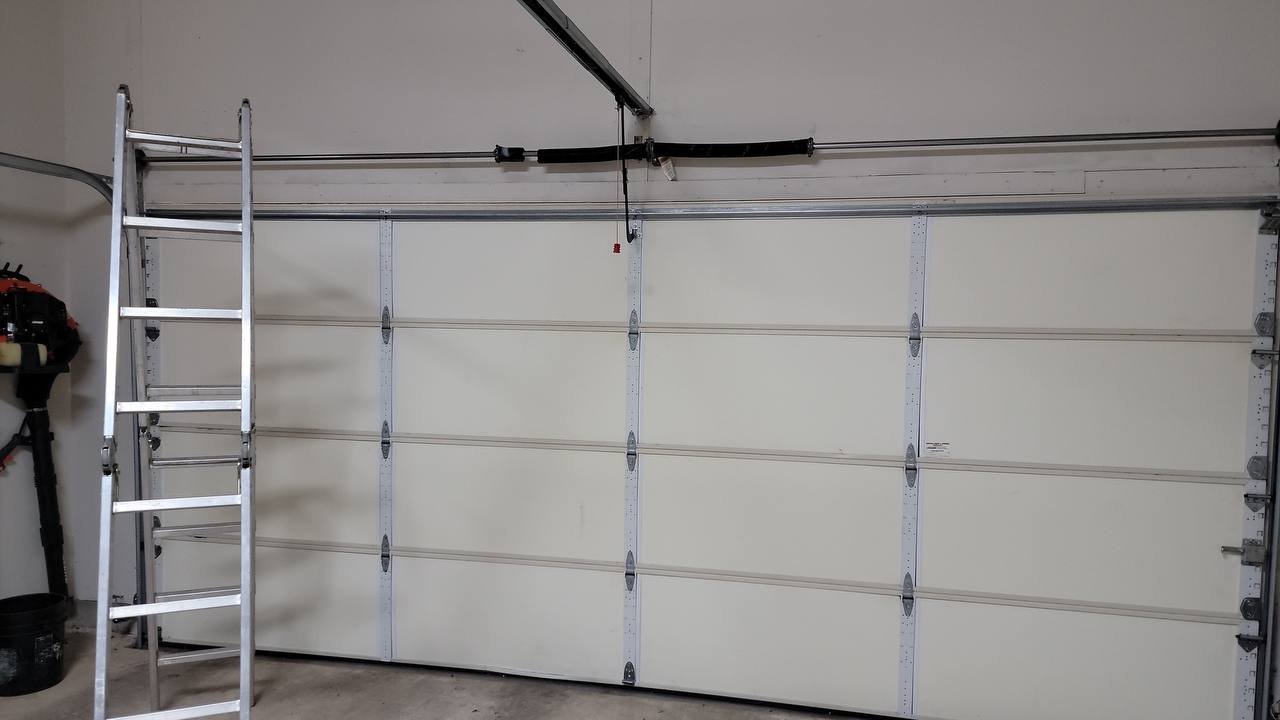When it comes to protecting your Edmonds garage from drafts, moisture, and energy loss, choosing the right weather stripping material can make all the difference. Here’s a breakdown of the top options and how to select the best fit for your needs.
Rubber
- Pros: Highly durable, flexible, and excellent at sealing—especially when made from EPDM rubber, which resists UV and temperature fluctuations.
- Cons: Prone to degradation over time from oils or extreme cold.
(Type of weather stripping often used for bottom seals.) (GARAGE GUIDES, Titan Garage Doors, CCM Garage Door)
Vinyl
- Pros: Resilient, water-resistant, and affordable—ideal for moderate climates and various door types.
- Cons: Less flexible, especially in very cold weather. (Titan Garage Doors)
Silicone
- Pros: Stays flexible in extreme weather and UV-resistant—best long-term performance for coastal or variable climates.
- Cons: Higher cost and may require professional installation for precise fit. (Titan Garage Doors)
Foam (Closed-Cell)
- Pros: Lightweight, affordable, and excellent at filling uneven gaps for better insulation.
- Cons: Can compress over time and may need more frequent replacement. (Titan Garage Doors)
Felt
- Pros: Budget-friendly and easy to install—ideal for temporary or low-traffic areas.
- Cons: Least durable, especially in harsh weather; better for light use. (Titan Garage Doors)
Choosing the Right Material for Your Needs
| Key Factor | Recommendation |
|---|---|
| Climate | Silicone for wet or coastal, vinyl for mild, rubber for durability |
| Door Type | Rubber or silicone for metal; foam or felt for wood |
| Budget | Foam or vinyl for cost-effective, silicone for long-term investment |
Installation Basics
To fully weather-seal your garage, consider using the right combination:
- Bottom Seals (T, U, Bulb, or Brush) for the door base
- Threshold Seals on the garage floor to block water
- Side and Top Stripping to close gaps along jambs
- Panel Strips or V-Seals between door panels for tight closure
- Brush Seals where slight flexibility is acceptable
(The Spruce, frontrangeraynor.com)
Related Resources for Edmonds Area Content
- Explore home insurance insights covering garage door impacts: The Connection Between Garage Doors and Home Insurance — Issaquah site
- Choosing based on lifestyle preferences: How to Choose the Right Garage Door for Your Lifestyle — Tacoma site
- Maintenance tips that support weather sealing: Tips for Keeping Your Garage Door Clean Year-Round — Everett site
FAQ
Q: What weather stripping material lasts longest?
A: Silicone is the most durable—700% more UV resistant and flexible across weather extremes.
Q: Should I use both a bottom seal and a threshold?
A: Yes—combining both offers maximum protection against drafts and water penetration.
Q: How often should I replace weather stripping?
A: Inspect annually—replace when brittle, cracked, or gaps appear. Bottom seals often need updating every 2–5 years.
Q: Can I install weather stripping myself?
A: Generally yes—most types install with adhesive or nails. Use proper cleaning and fitting techniques for a solid seal. (GARAGE GUIDES)
Thanks
- garagedoors-edmonds.com – Edmonds garage door weather stripping expert
- garagedoors-seattle.com – Seattle garage door services
- garagedoors-bellevue.com – Bellevue garage door specialists
- garagedoors-redmond.com – Redmond door installations
- garagedoors-kirkland.com – Kirkland door maintenance
- garagedoors-mercerisland.com – Mercer Island garage services
- garagedoors-edmonds.com – (duplicate, skip)
- garagedoors-issaquah.com – Issaquah insurance-related door topics
- garagedoors-tacoma.com – Tacoma door lifestyle choices
- garagedoors-everett.com – Everett garage door tips
- garagedoors-bothell.com – Bothell door expertise
- garagedoors-sammamish.com – Sammamish installation services
- garagedoors-renton.com – Renton door maintenance
- garagedoors-lynnwood.com – Lynnwood garage services
- garagedoors-woodinville.com – Woodinville door care
Partners
- garagedoors-universityplace.com – University Place doors
- garagedoors-lakewood.com – Lakewood door specialists
- garagedoors-puyallup.com – Puyallup maintenance
- garagedoors-mukilteo.com – Mukilteo door services
- garagedoors-vancouver.com – Vancouver WA doors
- garagedoors-kenmore.com – Kenmore door care
- garagedoors-burien.com – Burien garage doors
- garagedoors-auburn.com – Auburn door maintenance
- garagedoors-southhill.com – South Hill services
- garagedoors-yarrowpoint.com – Yarrow Point services
- garagedoors-clydehill.com – Clyde Hill doors
- garagedoors-porttownsend.com – Port Townsend doors
- garagedoors-duvall.com – Duvall door repair
- garagedoors-snoqualmie.com – Snoqualmie installation
- seattlenews-today.com – Seattle news & home topics
- spokanenews-today.com – Spokane repair guides



